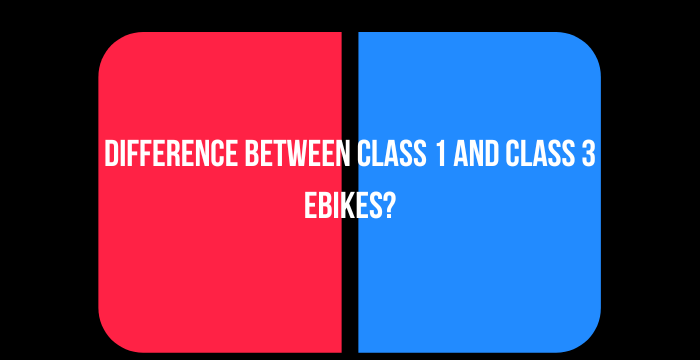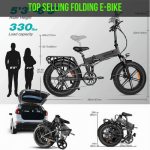
Are you considering getting an e-bike? Have you ever wondered what the difference is between class 1 and class 3 ebikes? If so, then this article is perfect for you! As an experienced e-bike expert and researcher, I’m here to tell you all about the differences between these two classes of electric bikes.
E-bikes are a great way to get around quickly and affordably while reducing your carbon footprint. With their powerful motors and portability, they give riders the freedom to explore new places with ease. But when it comes to choosing which type of e-bike best suits your needs, there’s no one size fits all answer. That’s why understanding the key differences between class 1 and class 3 ebikes is essential before making any decisions.
Class 1 and Class 3 ebikes have distinct features that make them unique from one another in terms of performance, cost, safety, legality, maintenance requirements, battery range and more. In this article we’ll discuss each element in detail so you can decide which type of e-bike will provide you with the level of freedom desired. So let’s dive right into exploring the subtle yet significant distinctions between these two kinds of electric bicycles!
Contents
What Is the Difference Between Class 1 and Class 3 Ebikes?
Features of Class 1 Ebikes
Class 1 ebikes are some of the most versatile and powerful models available on today’s market. Their design is built around a motor, which provides assistance to cyclists up to 20 mph as they pedal. This type of bike typically features components such as an integrated battery and drive system that allows for smooth power delivery and maximum efficiency when riding. In addition to its performance capabilities, class 1 ebikes offer excellent versatility with various frame sizes, styles, and add-on accessories that allow riders to customize their ride according to individual needs.
At the core of any class 1 ebike lies a sophisticated combination of components specifically designed to maximize performance and provide years of reliable service. These components include durable frames made from lightweight materials like aluminum or carbon fiber, sleek designs equipped with modern handlebars, brakes, shifters, cranksets and other parts that work together flawlessly in order to deliver superior power output while providing superior comfort throughout your ride. The overall result? A top-of-the-line experience you can count on every time you hit the trails!
Features of Class 3 Ebikes
Class 3 electric bikes are the most advanced type of ebike. They provide a motor-assisted, pedal-assist, electronic-assist or power-assist to riders on steep hills and long distances. These bikes allow users to go farther than ever before with less effort required from them.
Unlike Class 1 e-bikes, which offer only electric power assistance up to 20 mph for the rider to operate manually, Class 3 models can reach speeds of 28 mph with an electronic assist feature enabled by its battery power. This significantly increases the range that a rider can travel in one day and makes it possible for even more adventure seekers to explore new places and conquer longer rides with ease. Additionally, many Class 3 e-bikes also come equipped with built-in suspension systems that reduce vibrations while riding over rough terrain, as well as fatter tires that increase traction and stability in off-road conditions.
Overall, if you’re looking for increased speed and range without needing to put too much physical effort into your ride then you should consider investing in a Class 3 e-bike. Not only will this bike help get you where you want faster but it’ll also provide plenty of fun along the way!
Conclusion
The world of electric bicycles is growing rapidly, with more and more people opting for greener transportation solutions. Class 1 e-bikes are the least powerful type of e-bike on the market, while class 3 e-bikes have higher power capabilities than their class 1 counterparts.
Class 1 e-bikes use a pedal assist system to provide additional power as you ride. This makes them ideal for those who want an easy way to get around town or commute short distances without breaking a sweat. The speed limit for these bikes is 20 mph, making it safe and comfortable to travel in urban areas. Additionally, they lack any throttle feature which means riders must rely solely on pedaling to make progress.
On the other hand, class 3 e-bikes offer much more power than a typical class 1 bike. With a maximum speed of 28mph and a throttle feature that can be used independently from pedaling, these bikes are perfect for long-distance commuting and tackling hilly terrain with ease. Their increased power also allows riders to keep up with traffic when cycling along busy roads something that isn’t possible on slower models like class 1s.
Ultimately both types of electric bicycles serve different purposes based on your needs and preferences; however, if you’re looking for greater convenience with longer commutes then choosing a class 3 model could be the right choice for you! Symbolically speaking, whether you choose one over the other ultimately depends on how far you wish to go figuratively as well as literally!



